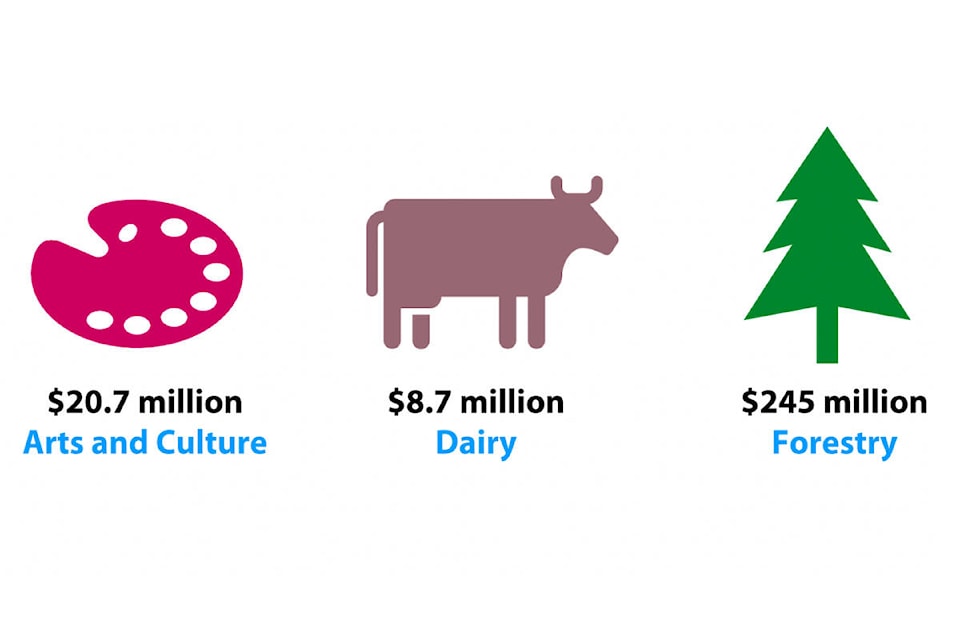An economic frame has been put around the Quesnel arts industry.
A study of the region’s creative sector was commissioned by the Quesnel & District Community Arts Council which pinpointed an estimated $20-million in annual money flow. Much of it is unseen as artists of most description tend to make their products in solitary conditions. And like a lot of small businesses, their expenditures and revenues are cycled in small amounts in usually private transactions.
But when they are all added up, a lot of money is generated for the economy and a lot of lifestyle benefits radiate across the community.
The report was compiled by research company NordicityGlobal and included town hall-style meetings, outreach communication by phone and email, and a community survey that attracted the input of 250 participants.
YOU can read the full report by CLICKING RIGHT HERE
“The survey responses revealed high levels of engagement and participation in arts and culture in the North Cariboo,” said the report authors, relayed to the North Cariboo Joint Advisory Committee (a combined group of Quesnel and Cariboo Regional District elected officials) by Community Arts Council executive director Dina Unrau.
- 93 per cent said they attend and/or participate in arts and culture events
- 78 per cent visit live performances such as music shows at least once per year
- 45 per cent visit galleries, museums, or other cultural destinations at least once per year
“Cultural organizations and artists generated more than $20 million in direct economic activity in the North Cariboo in 2022,” said the report.
This contributed $12 million in local GDP (gross domestic product) and generated about 670 jobs.
It translated into more than $7 million in household income for people living in the region.
In addition to that, it was estimated that $1.5 million was spent annually in the local economy just on pre- or post-event buying when people attended arts performances.
The report also looked beyond the dollars-and-cents modelling and into the arts industry’s other contributions that help the economy.
“Ninety-six per cent agreed arts and culture in the region improve wellbeing,” the report said. “Ninety-four per cent agreed arts and culture improve quality of life. Ninety-two per cent agreed the local sector creates a shared sense of belonging.”
As part of that, the respondents reported the arts and culture sector helped bring together people of different culture and backgrounds, helped participants overcome loneliness and depression, helped foster discussions about important social issues, and gave youth a channel to express themselves.
All these factors contribute to people enjoying their lives more, in the community, retaining and recruiting population to live and work in the Quesnel region. Respondents said they saw the arts and culture as a positive influence on “visitors’ and newcomers’ perceptions and draw people to the community,” how participation was “especially valuable for children and young people,” and 95 per cent of those consulted felt “arts and culture enhance the North Cariboo as an attractive place to live.”
By far the greatest challenge identified by respondents was Quesnel’s lack of performance and exhibition space. Almost 60 per cent circled that as the region’s most pressing arts and culture need. When the participants in the arts sector were asked the same question, the level shot to 84 per cent. The most important addition would be a live performance space, followed in order of importance by rehearsal and creation/maker space (49 per cent), then display space (33 per cent), and 29 per cent saw the need for educational and training space. Others saw a need, as well, for administrative and meeting spaces.
There was also a desire expressed for enhanced communication and marketing abilities, so local artists and organizations could more effectively let the public know what they were doing and what opportunities were out there to take in the available visual and performing arts. There would be even greater economic spinoff and an enhanced cultural profile if the public better knew what was already there and underway within the Quesnel region.
“Local organizations often struggle to adequately publicize the programming, exhibitions, and performances / events that they offer, partly due to limited capacity and over-reliance on volunteers,” said the report.
Even the artists and organizations themselves would likely work more collaboratively, said the report, if they were not in communication silos.
“There is a feeling that contributions of the North Cariboo region’s arts and culture sector are under-recognized, meaning that its impact is undervalued.”
Quesnel has, per the findings of the research, 30 arts and culture organizations (plus individuals and informal groupings), 65 per cent of which have been in operation at least 11 years. Of them all, two-thirds generate under $50,000 per year but the overall average is revenue of $500,000 compared to expenses of $417,000.
Most of the expenses are to pay staff or contracted services and buying supplies. Sixty-five per cent of expenditures are paid into the North Cariboo region’s economy, another 20 per cent spent within B.C.
The arts and culture sector was seen as having a natural hand in boosting the closely related tourism sector.
READ MORE: Arts impacts being measured in Quesnel
READ MORE: The state of the arts: meetings gathering key culture information
